Germany was a frontrunner of film star postcards in colour. During the 1950s and 1960s, Klaus Collignon was one of the photographers whose colour studio portraits were often used for postcards by such German publishers as UFA and WS-Druck. He made highly polished portraits of the Italian sex goddesses Sophia Loren and Gina Lollobrigida, but also wonderful pictures of the innocent-looking German stars of the Heimatfilms like Sonja Ziemann.

Sophia Loren. German Postcard by WS-Druck, Wanne-Eickel, no. F 13. Photo: Klaus Collignon.
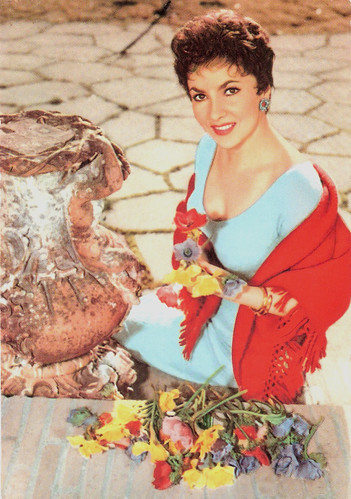
Gina Lollobrigida. French postcard by Editions P.I., Paris, offered by Les carbones Korès 'Carboplane', no. 97. Photo: Klaus Collignon.
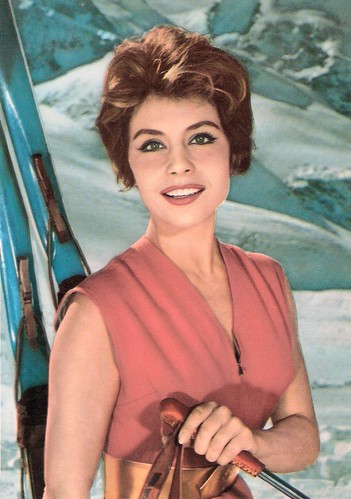
Sonja Ziemann. French postcard by Edition P.I., Paris, no. CK-238. P.I. was the French licency holder for UFA, Berlin-Tempelhof. Photo: Klaus Collignon / UFA.
Klaus Collignon is most known for his highly polished studio portraits, which were used in international magazines like the German Neue Illustrierte and the French Paris Match, and for many postcards.
They are still often used today. An example is the recently published biography of Sophia Loren, Yesterday, Today And Tomorrow - My Life (2014), which contains a photo of her by the German photographer.
But Collignon was also a still photographer who worked on film sets, e.g. on the set of the popular German Western Der Schatz im Silbersee/The Treasure of the Silver Lake (Harald Reinl, 1962) and Sophia Loren's film Madame sans gêne (Christian Jacque, 1961)
On the site Flash Projects there is another wonderful picture of La Loren, at which Collignon captures her in a quiet moment on a set. Unaware of the camera, Loren absent-mindedly plays with her shoe under the table.
The style of this sweet image reveals the developing appetite in the 1960s for portraits of stars that were unposed and more realistic, depicting not only the subject’s public persona but also revealing their character outside of the public eye.
Klaus Collignon obviously was a master of both styles.
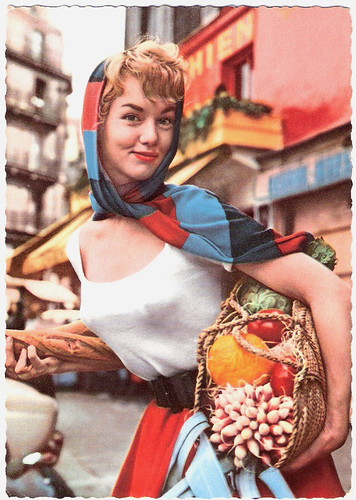
Mylène Demongeot. German postcard by Universum-Film Aktiengesellschaft (UFA), Berlin-Tempelhof, no. CK 150. Retail price: 30 Pfg. Photo: Klaus Collignon / UFA.
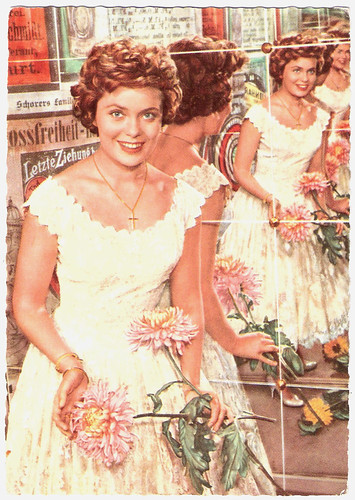
Ulla Jacobsson. German postcard by Universum-film Aktiengesellschaft (UFA), Berlin-Templehof, nr. CK-247. Retail price: 30 Pfg. Photo: Klaus Collignon.

Christine Kaufmann. German postcard by Universum-Film Aktiengesellschaft (UFA), Berlin-Tempelhof, no. CK 302. Photo: Klaus Collignon / UFA.

Anita Ekberg. German postcard by WS-Druck, Wanne-Eickel. Photo: Klaus Collignon.
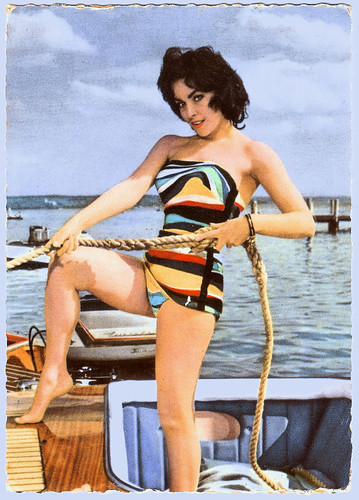
Mara Lane. German postcard by UFA, no. CK-200. Photo: Klaus Collignon / UFA.
But who was Klaus Collignon? It is not easy to find online information about him. But his pictures on the net lead to bits of information that give an indication of his life and career.
During the Second World War, Klaus Collignon was a war correspondent and cameraman. At the historical photo community V like Vintage, there is a 1942 photo of Collignon filming military action in the harbour of La Spezia in Italy.
On the same site, there is a photo he made of three young women on a sailing boat. One of them was Ilse Riefenstahl-Rehtmeyer, who had just divorced Leni Riefenstahl’s brother Heinz.
Klaus and Ilse married in 1943. After the war, they divorced but Ilse always kept his name.
In 2003, Ilse Collignon published the memoir Liebe Leni about her first husband Heinz Riefenstahl and his sister Leni, who she described as a ruthless careerist unscrupulously using her close Nazi contacts to enforce her will.
Klaus married his second wife, Rosemarie, and in 1951, their son Stefan Colin Collignon was born in Munich. Stefan is now professor of political economy at St Anna School of Advanced Studies, Pisa and president of the Scientific Committee of Centro Europa Ricerche (CER), Rome.
During the 1960s, Collignon once worked again as a cinematographer. He did the camera work for the short black and white film Vor der Kamera/Before the camera (Eberhard Hauff, 1964). According to both IMDb and Filmportal.de, it was his only film credit.
If you have more information about Klaus Collignon, please let us know.
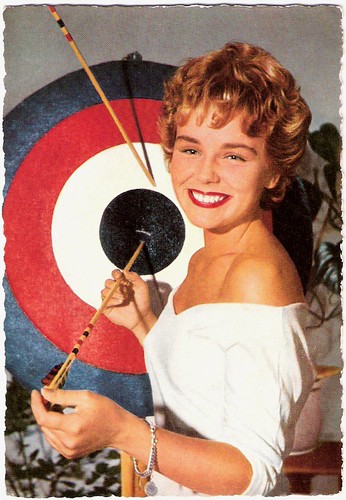
Susanne Cramer. German postcard by WS-Druck, Wanne-Eickel, no. F 77. Photo: Collignon.
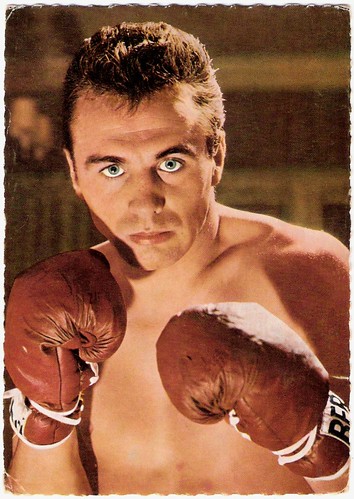
Gustav 'Bubi' Scholz. German postcard by UFA (Universum-Film Aktiengesellschaft), Berlin-Tempelhof, no. CK 342. Retail price: 30 Pfg. Photo: Klaus Collignon / UFA.

Barbara Rütting. German postcard by UFA (Universum-Film Aktiengesellschaft), Berlin-Tempelhof, no. CK-168. Retail price: 30 Pfg. Photo: Klaus Collignon / UFA.

Liselotte Pulver. German postcard by WS-Druck, Wanne-Eickel, no. F 42. Photo: Collignon.

Horst Buchholz. German postcard by UFA (Universal-Film Aktiengesellschaft), Berlin-Tempelhof, no. CK-145. Photo: Klaus Collignon / UFA. Top and bottom sides of the postcard were cut off.
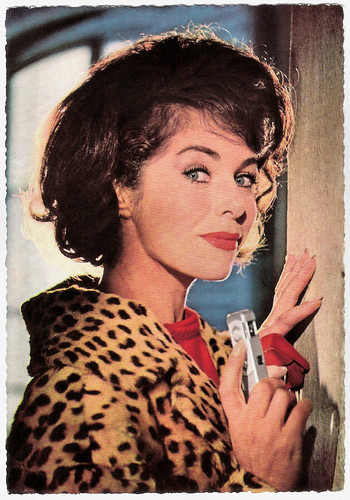
Marianne Koch. German postcard by Krüger, no. 902/187. Photo: Klaus Collignon.
Check out our other posts on film star photographers. See the links at right under the caption 'The Photographers'.
Sources: Ilse Collignon (Liebe Leni), V like Vintage, Flash projects, The International Who's Who, Filmportal.de, and IMDb.

Sophia Loren. German Postcard by WS-Druck, Wanne-Eickel, no. F 13. Photo: Klaus Collignon.

Gina Lollobrigida. French postcard by Editions P.I., Paris, offered by Les carbones Korès 'Carboplane', no. 97. Photo: Klaus Collignon.

Sonja Ziemann. French postcard by Edition P.I., Paris, no. CK-238. P.I. was the French licency holder for UFA, Berlin-Tempelhof. Photo: Klaus Collignon / UFA.
La Loren
Klaus Collignon is most known for his highly polished studio portraits, which were used in international magazines like the German Neue Illustrierte and the French Paris Match, and for many postcards.
They are still often used today. An example is the recently published biography of Sophia Loren, Yesterday, Today And Tomorrow - My Life (2014), which contains a photo of her by the German photographer.
But Collignon was also a still photographer who worked on film sets, e.g. on the set of the popular German Western Der Schatz im Silbersee/The Treasure of the Silver Lake (Harald Reinl, 1962) and Sophia Loren's film Madame sans gêne (Christian Jacque, 1961)
On the site Flash Projects there is another wonderful picture of La Loren, at which Collignon captures her in a quiet moment on a set. Unaware of the camera, Loren absent-mindedly plays with her shoe under the table.
The style of this sweet image reveals the developing appetite in the 1960s for portraits of stars that were unposed and more realistic, depicting not only the subject’s public persona but also revealing their character outside of the public eye.
Klaus Collignon obviously was a master of both styles.

Mylène Demongeot. German postcard by Universum-Film Aktiengesellschaft (UFA), Berlin-Tempelhof, no. CK 150. Retail price: 30 Pfg. Photo: Klaus Collignon / UFA.

Ulla Jacobsson. German postcard by Universum-film Aktiengesellschaft (UFA), Berlin-Templehof, nr. CK-247. Retail price: 30 Pfg. Photo: Klaus Collignon.

Christine Kaufmann. German postcard by Universum-Film Aktiengesellschaft (UFA), Berlin-Tempelhof, no. CK 302. Photo: Klaus Collignon / UFA.

Anita Ekberg. German postcard by WS-Druck, Wanne-Eickel. Photo: Klaus Collignon.

Mara Lane. German postcard by UFA, no. CK-200. Photo: Klaus Collignon / UFA.
Leni Riefenstahl's sister-in-law
But who was Klaus Collignon? It is not easy to find online information about him. But his pictures on the net lead to bits of information that give an indication of his life and career.
During the Second World War, Klaus Collignon was a war correspondent and cameraman. At the historical photo community V like Vintage, there is a 1942 photo of Collignon filming military action in the harbour of La Spezia in Italy.
On the same site, there is a photo he made of three young women on a sailing boat. One of them was Ilse Riefenstahl-Rehtmeyer, who had just divorced Leni Riefenstahl’s brother Heinz.
Klaus and Ilse married in 1943. After the war, they divorced but Ilse always kept his name.
In 2003, Ilse Collignon published the memoir Liebe Leni about her first husband Heinz Riefenstahl and his sister Leni, who she described as a ruthless careerist unscrupulously using her close Nazi contacts to enforce her will.
Klaus married his second wife, Rosemarie, and in 1951, their son Stefan Colin Collignon was born in Munich. Stefan is now professor of political economy at St Anna School of Advanced Studies, Pisa and president of the Scientific Committee of Centro Europa Ricerche (CER), Rome.
During the 1960s, Collignon once worked again as a cinematographer. He did the camera work for the short black and white film Vor der Kamera/Before the camera (Eberhard Hauff, 1964). According to both IMDb and Filmportal.de, it was his only film credit.
If you have more information about Klaus Collignon, please let us know.

Susanne Cramer. German postcard by WS-Druck, Wanne-Eickel, no. F 77. Photo: Collignon.

Gustav 'Bubi' Scholz. German postcard by UFA (Universum-Film Aktiengesellschaft), Berlin-Tempelhof, no. CK 342. Retail price: 30 Pfg. Photo: Klaus Collignon / UFA.

Barbara Rütting. German postcard by UFA (Universum-Film Aktiengesellschaft), Berlin-Tempelhof, no. CK-168. Retail price: 30 Pfg. Photo: Klaus Collignon / UFA.

Liselotte Pulver. German postcard by WS-Druck, Wanne-Eickel, no. F 42. Photo: Collignon.

Horst Buchholz. German postcard by UFA (Universal-Film Aktiengesellschaft), Berlin-Tempelhof, no. CK-145. Photo: Klaus Collignon / UFA. Top and bottom sides of the postcard were cut off.

Marianne Koch. German postcard by Krüger, no. 902/187. Photo: Klaus Collignon.
Check out our other posts on film star photographers. See the links at right under the caption 'The Photographers'.
Sources: Ilse Collignon (Liebe Leni), V like Vintage, Flash projects, The International Who's Who, Filmportal.de, and IMDb.
No comments:
Post a Comment